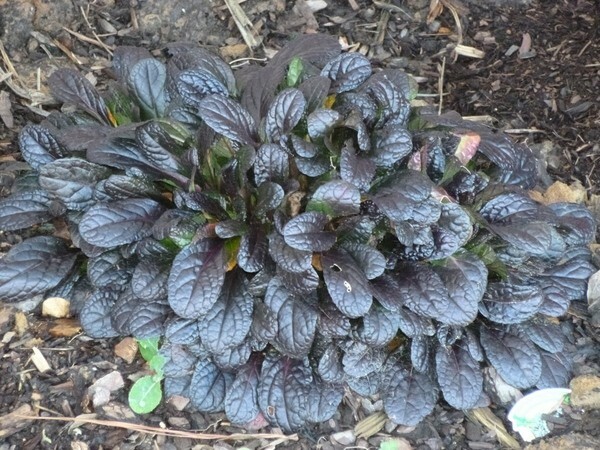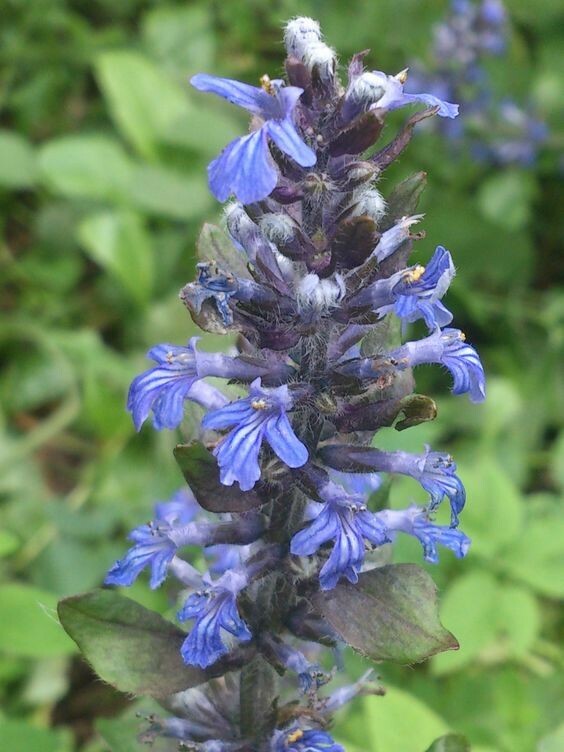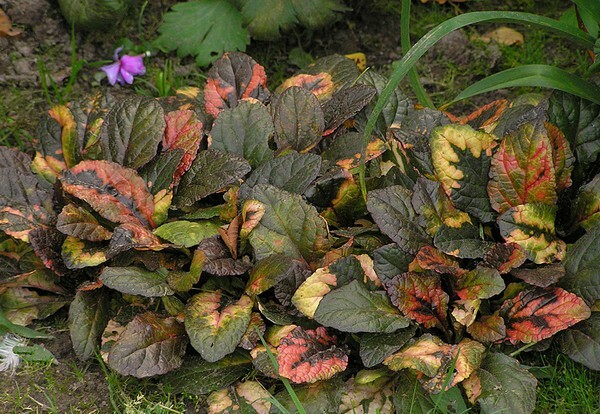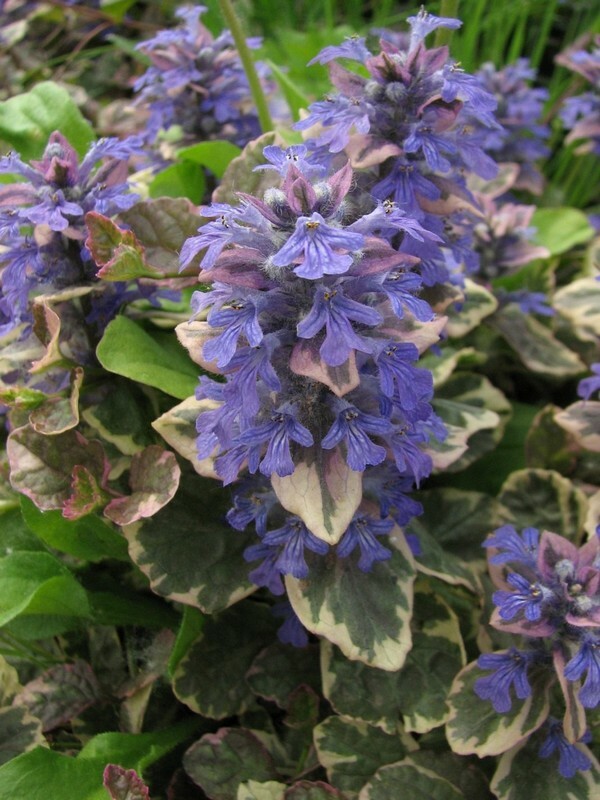- Botanic description
- Decorative use
- Chemical composition
- Therapeutic properties
- Procurement of raw materials
- Methods of application
- Precautions
Creeping vesicle refers to perennial herbaceous plants and is considered the most common species of the genus Zhivuchka belonging to the family. It occurs on the territory of Europe, Iran, North Africa, the Caucasus, Eastern Siberia, Asia Minor and the Far East. The plant is ground cover, evergreen, has beautiful flowers of various colors, due to which it is actively used in gardening and landscape design. Creeping leaves are sometimes used in cooking. From above-ground parts of a plant in folk medicine, medicinal products are manufactured that possess anti-inflammatory, healing, styptic, and tonic effects. In the people zhivichka creeping received the names of oak, voglodka, odnogubka, dubnitsa, heart or fever grass.

Botanical description
Vein creeping in natural conditions grows in mixed and deciduous forests, in glades, fringes, felling, on wet meadows, in thickets of bushes and plantings. The plant is unpretentious and does not require special care, is drought-and frost-resistant, easily adapts to almost any conditions, and therefore received such an interesting name. In the same place can grow several years.
Zivuchka prefers penumbra, wet sandy loamy and loamy soils rich in organic substances. Reproduction is carried out by seeds characterized by good germination, or by a vegetative method( rosettes of leaves).
The height of the plant does not exceed 20 - 25 cm. Flower-bearing stems begin to grow in spring, they have a quadrangular cross-section. The stems can be covered with soft hairs.
Root system branched, rhizome short.
Leaves are soft, spatulate, oval, broad or obovate, with whole, slightly wavy, notched or dentate margins. They have a short pubescence on top or on both sides. Radical leaves grow on long petioles, they form rosettes up to 8 cm high, from which long creeping rooting antennae leave. Leaves on the stem are sessile or short-petioled. Rosette leaves during flowering are preserved.

The flowering period is from April to July, on average it lasts three weeks. At the end of summer, a secondary flowering is possible, but the flowers on the plant during this period are much smaller. Flowers are in the axils of the leaves, collected in false whorls of 6-8 pieces, form spicate inflorescences on the top of the stem. Perianth double. Corolla two-lobed, 12-17 mm long, pubescent, pubescent, blue, purple, blue, rarely pink or white. Upper lip 2-bladed, very short, 4 stamens under it, lower - 3-lobed, middle lobe largest( 2 times higher and 3 - 4 times wider than lateral ones).After the flowering, the corolla does not fall off. Calyx pubescent, up to 7 mm long, bell-shaped, composed of 5 triangular teeth.
Fruits ripen from June to August. They are light brown wrinkled pubescent rounded nuts.
Interesting: Seeds of creeper vulture are bait for ants. Some of them are eaten by insects, and some are carried, thus ensuring the distribution and self-seeding of the plant.
Decorative application
The creeping vivarium as a ground cover plant, which forms quite picturesque pillows on the ground, is widely used in landscape design. It is planted to decorate gardens, parks, squares, stone flower gardens, alpine hills, small slopes, to fill the voids between bushes and tall perennials, in the trunks, to create live curbs along the garden paths. The leaves of the viviparous creeping winter hibernate under the snow, and with the onset of spring they begin to be renewed, so almost all the year round it has a rather beautiful view.

Cultivars were cultivated with creeper varieties with different colors of flowers and leaves. The most popular of them are:
- Variegata Rubra, with red-brown dark leaves;
- Atropurpurea, with shiny wrinkled bronze-lilac leaves and large violet inflorescences;
- Multicolor, with dark green or bright violet leaves, covered with green, yellow, scarlet, orange and pink spots;
- Burgundy Glow, with small purple, reddish or brown leaves with a cream border and pink spots;
- Chocolate Chip, with narrow brown leaves;
- Jungle Beauty, with large dark green leaves of a purple hue;
- Black Scallop, with large slightly shiny brown leaves, with jagged edges and blue flowers.

Recommendation: For propagation of ornamental varieties, a vegetative method should be used, since varietal plants grown from harvested seeds do not retain the characteristics of the parent variety.
Chemical Composition
In folk medicine, for medicinal purposes, the aerial part of the creeper is used. Its chemical composition has not been studied enough. However, it is known that it contains:
- minor amounts of essential oil;
- tanning agents;
- diterpenoids;
- phytoecdisone;
- traces of alkaloids;
- steroids;
- iridoids.
The healing properties of
The useful properties of creeping vomit are that it possesses anti-inflammatory, hemostatic, diuretic, healing, antispasmodic, astringent, antiseptic and tonic effect. When used internally, her infusions and broths help improve metabolism, relieve coughing in bronchitis and other respiratory illnesses, strengthen immunity, reduce fever and ease malaria. Vein creeping can be used for rheumatism, peptic ulcer, diarrhea, bloody diarrhea, cholelithiasis and other diseases of the digestive tract and liver, as well as kidney stones and inflammation of the uterine appendages.
Decoctions and infusions of plants are used externally in the form of:
- rinses for hair strengthening and prevention of alopecia,
- baths with a body weight deficit;
- rinsing with tonsillitis, tonsillitis and inflammatory processes in the oral cavity( ulcers, stomatitis, gingivitis);
- washes and lotions with purulent wounds, ulcers, bruises.
Locally also use a gruel made from the leaves of the cudweed creeper to treat purulent wounds, ulcers, and fresh grass juice to eliminate calluses, treat burns and bite bees.
Interesting: Young radical leaves of the viable creeping plant can be eaten. Usually they are added to vegetable salads or used as a seasoning for fish and flour dishes.
Procurement of raw materials
The collection of medicinal raw materials is carried out from May to August. To do this, the whiskers of the inflorescences and the creeping stems are carefully cut with scissors, and they are tied in small whiskers. Then, they are dried in a ventilated room or in the air, avoiding sunlight. For drying, you can also spread the grass in a thin layer on paper or natural cloth, periodically turning over.
Finished dried raw material has a bitter astringent taste. Keep it should be in bags of paper or tissue bags in a dry place for not more than one year.
Ways of using
In folk medicine from above-ground parts, cuddle gills prepare decoctions and infusions, which can be used both externally and inward.
Infusion for malaria
The crushed dry herb of the plant( 1 tbsp.) Is placed in a faceted glass and boiling water is added to the top, covered with a lid and insisted. When the product has cooled to a warm state, it is filtered and taken at 1 tbsp.l.5 times a day.
Infusion for diseases of the digestive system, respiratory tract and inflammation in the genitourinary system
A mixture of dry flowers and leaves of the creeping vine( 2 tablespoons) is placed in a cup or glass and poured into 200 ml of boiling water, cover and insist 2 hours, wrapped on top with a small towelto maintain heat. Then filter and use inside for 1 tbsp.l.three times a day. With a stomach ulcer, the infusion obtained is taken at 1 tbsp.l.5 times a day.Herbal tea for colds
For the treatment of colds, a collection of equal parts of the creeping vine, linden flowers, melissa grass and oregano is prepared. The resulting mixture is brewed in the form of tea and is used as a diaphoretic and antipyretic.
Insect bite remedy
Fresh plant leaves are rubbed between the fingers and applied to the problem site. This helps to reduce pain, eliminate irritation and prevents infection.
Infusion for external use
Dried raw materials( 1 tbsp.) Pour a glass of boiling water and insist for 4 hours. Then filter and use as directed. For lotions, rinses of the throat and oral cavity, 400 ml of solution will suffice, for washing the head one should prepare 1 liter. To wash a head with such infusion is recommended twice a week for 1.5 months.
Precautions for
Contraindications to the use of cudweed are:
- individual intolerance;
- predisposition to constipation;
- pregnancy and lactation;
- allergic reactions.
When treating, it is important to follow the recommended dosage so as not to harm the body. Before starting to receive funds from the livelihood, it is not superfluous to consult a doctor.
Abstract:
Second title:
Video about the peculiarities of growing creepers:
